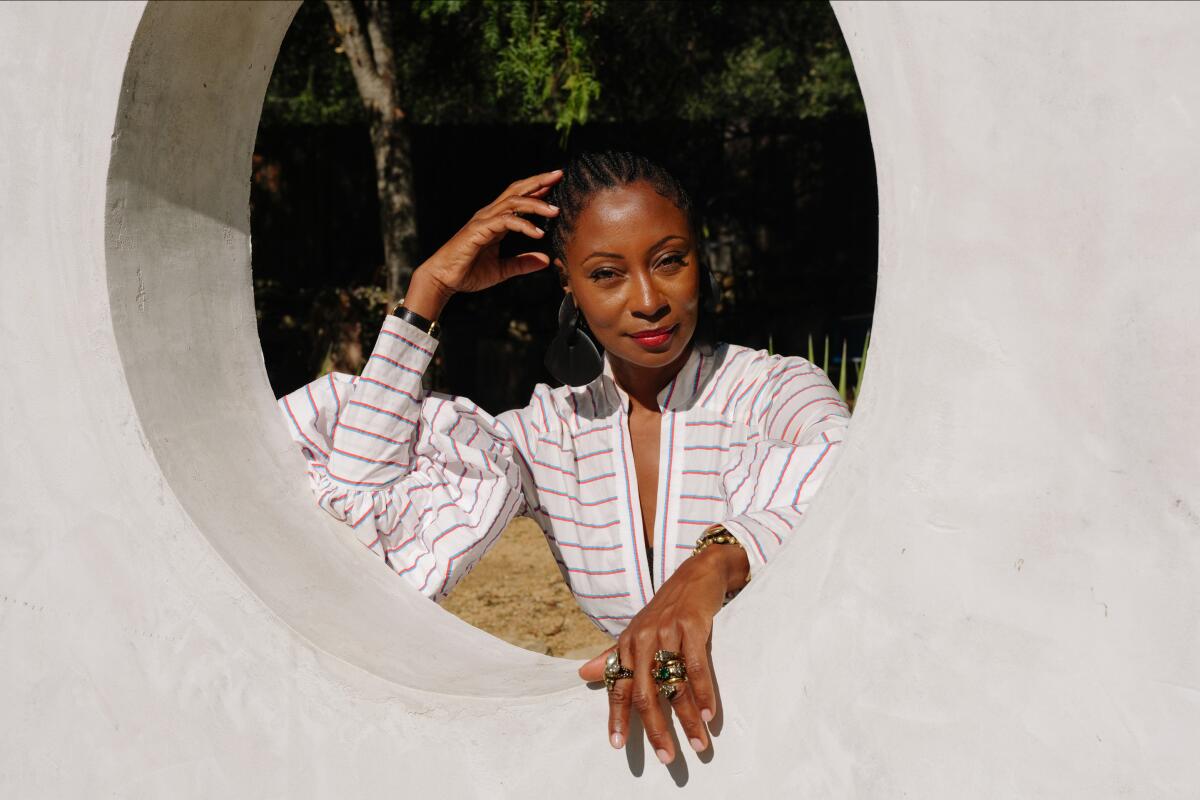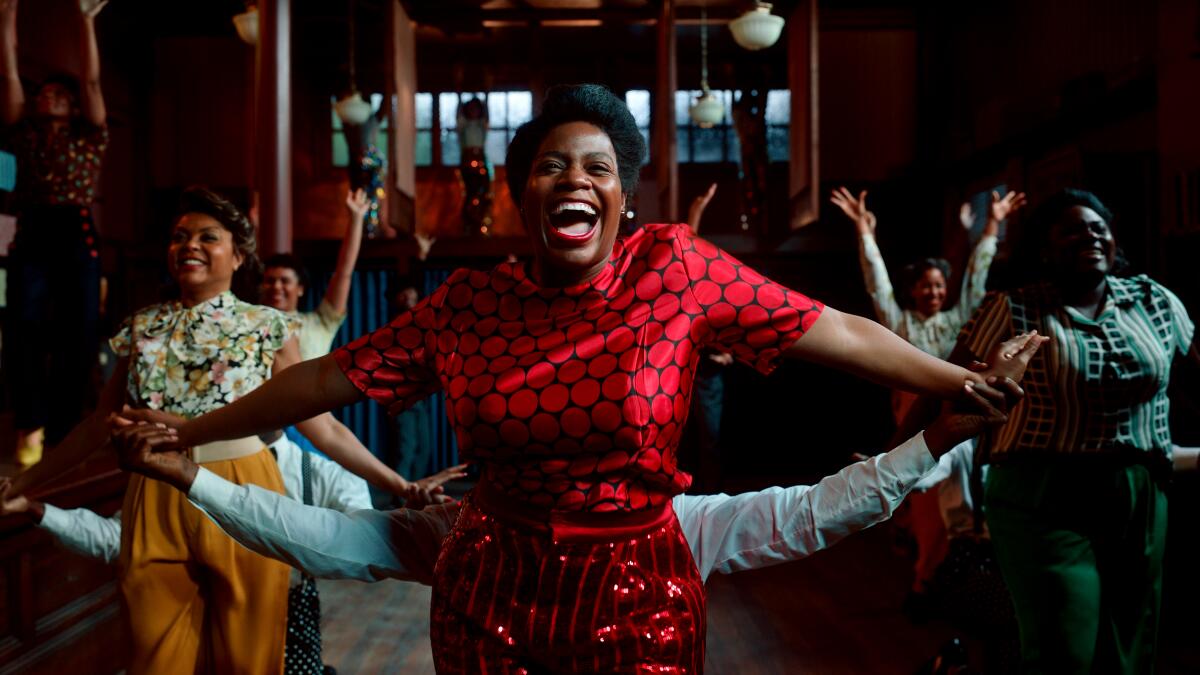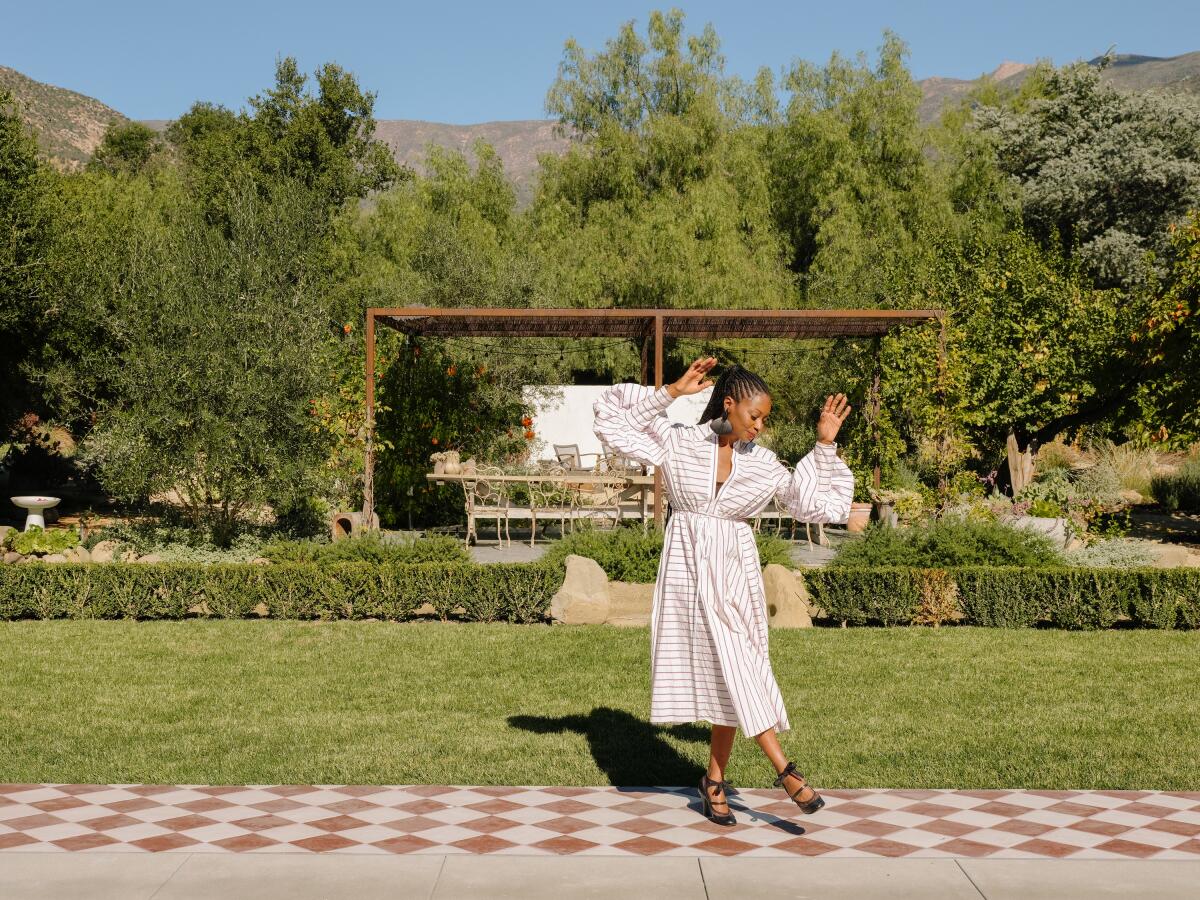Michael Jackson, Beyoncé: Choreographer Fatima Robinson gets them moving and shaking

- Share via
You might not know Fatima Robinson by name — but you certainly know her moves. The veteran dancer/choreographer — most recently tapped for the musical “The Color Purple” — broke big at age 21 by arranging dances for Michael Jackson in his 1991 “Remember the Time” video. She’s since worked with Beyoncé on her “Be Alive” performance at the Academy Awards, and on such TV shows as “black-ish” and “American Idol” and the 2022 Super Bowl halftime show at SoFi Stadium. And this year, she joined the film academy as one of the very few choreographers admitted. Robinson is fast on her feet but slowed down for a moment to talk with The Envelope about dancing in clubs, the unexpected assist from Aaliyah in landing her the “Color Purple” job, and why dancing is her direct line to God.
You were never formally trained in dancing, but there you were, leading Michael Jackson and Beyoncé through their paces. Now you’ve done the choreography for “The Color Purple.” How did you learn your moves?
I always say clubs are my classroom. I would spend hours there. But once I realized I wanted to pursue my hobby as a career, I started taking African and belly dance and [other] classes to mix with my style. I’m not making it up as I go, but I’ve built my career out of breaking the rules or questioning, like, “Who said we can’t do that?”
How did your expertise in hip-hop and popular dance styles come in handy in choreographing for “Color Purple”?
African dance made me understand that hip-hop dance is just a form of that. They brought us here, but they couldn’t get the beat and the dance out of our bodies, so it just keeps reinventing itself. When you are dealing with the history of African dance and how that movement evolves [you] … understand that stomping and stepping and hand-slapping and hand-moving had to come from somewhere. So I take creative license to go, “This feels right. This feels like music that would have been played during slavery.” Then from out of slavery, “What is our movement?” It was really a lot of conversations with the director [Blitz Bazawule] to understand that movement. It’s also finding it in the room with costumes, hair, makeup and being on set. We chose moves that felt right.

Bazawule also had you choreograph narrative aspects, too — like how the camera moved around the actors. Why was that needed?
When you do a musical like this, I have around 10 or 14 dancers that I can put choreography on. In the script, it reads, “Shug arrives into town, dancers dance.” Then I get my imagination going. I create all these little storefronts and put the dancers in the storefront and give them movement that feels right to the character. A lot of that stuff is using my imagination. Then we’ll shoot it and edit it and deliver it to Blitz so he gets his creative juices going.
Do you usually have that much access on a film?
No. People understand when they hire me that they’re getting more than just a choreographer. I go so far as to speak with the costume designer to make sure we have the right shoes or aprons or hats or glasses. All those things are important to the dance, too.
Is there a technical term for the rough-draft film that you create of the scenes for the director? Is it pre-viz … dance?
No, it’s just called Fatima’s Way.

Blitz told The Envelope he had regular conversations with his female crew to make sure he was doing things right, story-wise. Were you one of those confidants?
Totally. We were always looking out for the ladies and looking for moments to share sisterhood in. Blitz is a special director because he’s so creative and versed in so many other things.
How did you two connect originally?
When Blitz was in high school [in Ghana], there was a talent show, and he did the choreography from a music video I had done for Aaliyah [“Are You That Somebody”]. Way back then, Blitz said, “I’m going to work with that girl [Robinson] one day.” And this happened to be the perfect moment for us to work together. We immediately vibed, and I had his back from Day One.

What spurred you to want to dance and make it your life’s work?
My mom was a religious person, and I wasn’t, but for me dancing is where I felt closer to God. My mom didn’t want me to dance, and some people in the church called dancing “of the devil.” But I was like, “How could something that makes me feel closer to God be bad?” So I went against my family and pursued what I wanted to do and did pretty well.
So have they come around on the subject since?
Oh, 100%. My mom takes credit for anything I do. Anything.
More to Read
From the Oscars to the Emmys.
Get the Envelope newsletter for exclusive awards season coverage, behind-the-scenes stories from the Envelope podcast and columnist Glenn Whipp’s must-read analysis.
You may occasionally receive promotional content from the Los Angeles Times.









